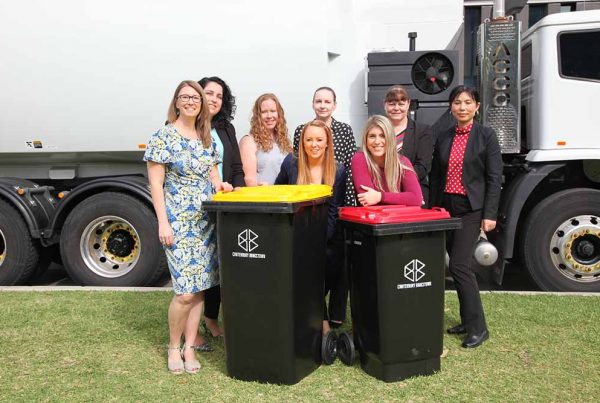
Image: Jase Curtis/flickr
Promoting your products and services in today’s information loaded marketplace is not an easy task.
And when it comes to marketing to the public sector you need to take a closer look at the challenges. Then your task is to present the solution in a style that requires a radical shift from existing tried-and-true approaches.
You’ve probably heard of the phrase “KISS”, and it’s not what you think.
KISS is an acronym for “Keep it simple, stupid” and is a minimalistic design principle that supports the simplification of processes, systems and operations, whatever they are and whoever creates them.
To paraphrase Virgin Group founder Sir Richard Branson, complexity is your enemy, any fool can make something complicated – it’s hard to make something simple.
If we were to ask you to note the brands that embody the KISS approach, chances are that you would think of Apple, Twitter or Nike.
These companies have mastered the art of delivering a bold message in the form of a catchy slogan that strongly resonates with wide demographics over a long period of time.
We’re still saying “Just Do It”!
But these prolific companies aren’t the only ones who’ve scored huge wins in delivering an important message.
Governments do it!
If we look at Australia’s history in political outreach, we find some important touchstones that resonate to this day.
Thousands of hours are spent on election campaigns boasting key catchphrases, slogans or speeches that penetrate the hearts and minds of the people and tap into a deeper level of awareness.
You’ll probably remember these quite vividly, including:
- Kevin ‘07
No slogan in Australia’s recent political history was as effective as Kevin Rudd’s self-aggrandisement in 2007. He excited key Howard swing-voting demographics who were blistered by controversial changes to industrial relations laws. And led the election in a more ‘presidential’ style of campaigning. It paid in dividends. - ‘Stop the Boats’
Tony Abbott used this phrase, among others, with undeniable effect in 2010 and 2013, appealing to crowds unhappy with Labor’s open borders policy. It addressed a perceived problem and pitched a solution in only three words. Although it was mocked with a counter phrase “Slogans for Bogans”, it eventually paid off with electoral triumph. - ‘Moving Forward’
Julia Gillard’s self-conscious pledge to unite the Labor Party after ousting Mr Rudd in 2010. Although ridiculed, it was effective in bolstering sympathy and support from Independent MPs in a hung parliament. - L-Plate Latham
One of the most blatant examples of how you can use negative campaigning through bold visuals. In 2004, Mark Latham was criticised as being too inexperienced to be trusted to competently manage the economy, so the Coalition associated his name with L-plates for learner drivers. Ouch! - It’s Time
Gough Whitlam’s 1972 electoral campaign signaled an unprecedented shift in cultural tone and attitudes across Australia. The Baby Boomer generation was at its most impressionable, and it wanted a new style of government to represent it. All that in two words. Not bad, Gough!
You can do it, too
Now you have some examples of how governments strive to win support from demographics using the simplest slogans they can muster.
It’s the single most important element in standing out from your competitors. You need to take a page out of the books of successful campaigners and turn it on them using the KISS principles.
But instead of appealing to millions of voters, your goal is to market your products and services to the public sector to ensure you’re a household name to them in their procurement processes.
You need to apply the KISS steps in a similar way:
- Know your audience
The onus is on the presenter to be understood. The audience has no obligation to understand the presenter. Research your audience and tailor the message to address their key concerns. You should inform and educate them. - Imagery
“A picture is worth a thousand words” has never been truer. A complex idea can be conveyed with a single still image. However, relying on images alone can run the risk of being misinterpreted, so ensure you hire help that can recognise your campaign’s flaws. - Social Media
Twitter, Facebook, Instagram, Snapchat are now used heavily by public sector figures as a powerful marketing tool. Governments and political heavyweights are case studies on how to effectively use social to connect and build trust with the community. But be careful, sometimes business professionals use social as a personal sounding board, so remember to approach in this avenue with caution. Also don’t be fooled into thinking that it’s not important what you post – if you want to look like a professional you need to act like one. Government officials have a team of marketing professionals who are committed to making it work. - Story Telling – it’s all in the detail
Choose your words and imagery deliberately, construct your sentences carefully, and use grammar properly.
Enjoying this article? Sign up for more! eNews Signup
Ask yourself:
- Who is going to read the copy?
- Where will it be published?
- What will they be expecting to get from it?
- In what circumstances will they be reading it?
- What do you want to happen as a result?
- Is the copy time sensitive?
- Do you need a call action?
Include:
- Inclusion of quotes or testimonials
- Core value and benefits
- Contact information
KISS Tips – marketing to the public sector
The public sector is concerned about the services to the nation. These need to be carried out in a manner that complies rigidly with internal procedure and protocol.
Unfortunately, there’s no one-size-fits-all approach when marketing to government given its vast size and scope. You will need to market your services by telling your story clearly and demonstrate best practice examples.
- Create a narrative based on a central theme to reinforce your area of expertise.
- Directly relate to a specific area of concern to capture the attention of a government decision maker.
- Finding the right image – this can be challenging and could take hours. Check for copyright as you either must own the image or cite attribution through creative commons.
- Contact a marketing specialist or a professional communications team that knows government, give them three ideas for articles they could write about your business and they will have access to a full image library and editorial skill to communicate your message. Make sure you come up with angles that are interesting to readers, not just a promotion for your company. The article could be about one of your unique projects or some type of community program highlighting the way your business is helping others.
- Most importantly use KISS to create a connected and highly effective marketing piece.
Stay tuned for more from our exclusive marketing B2G IQ Series!





